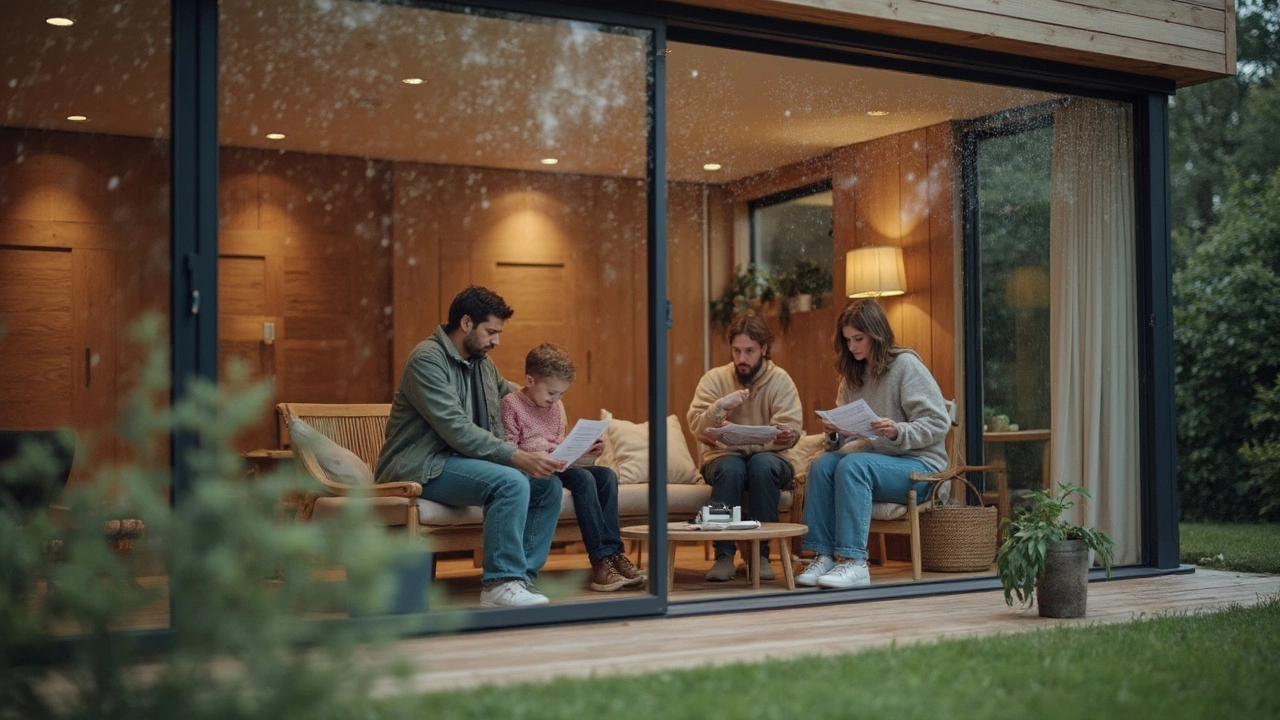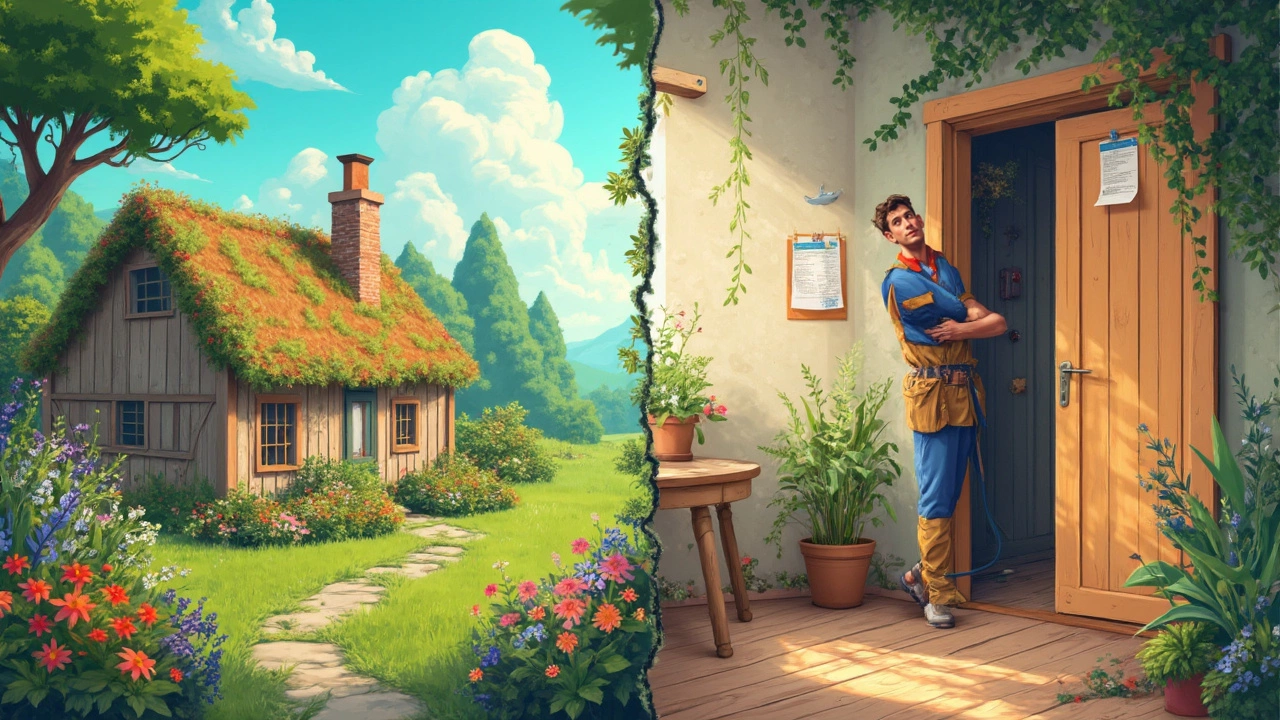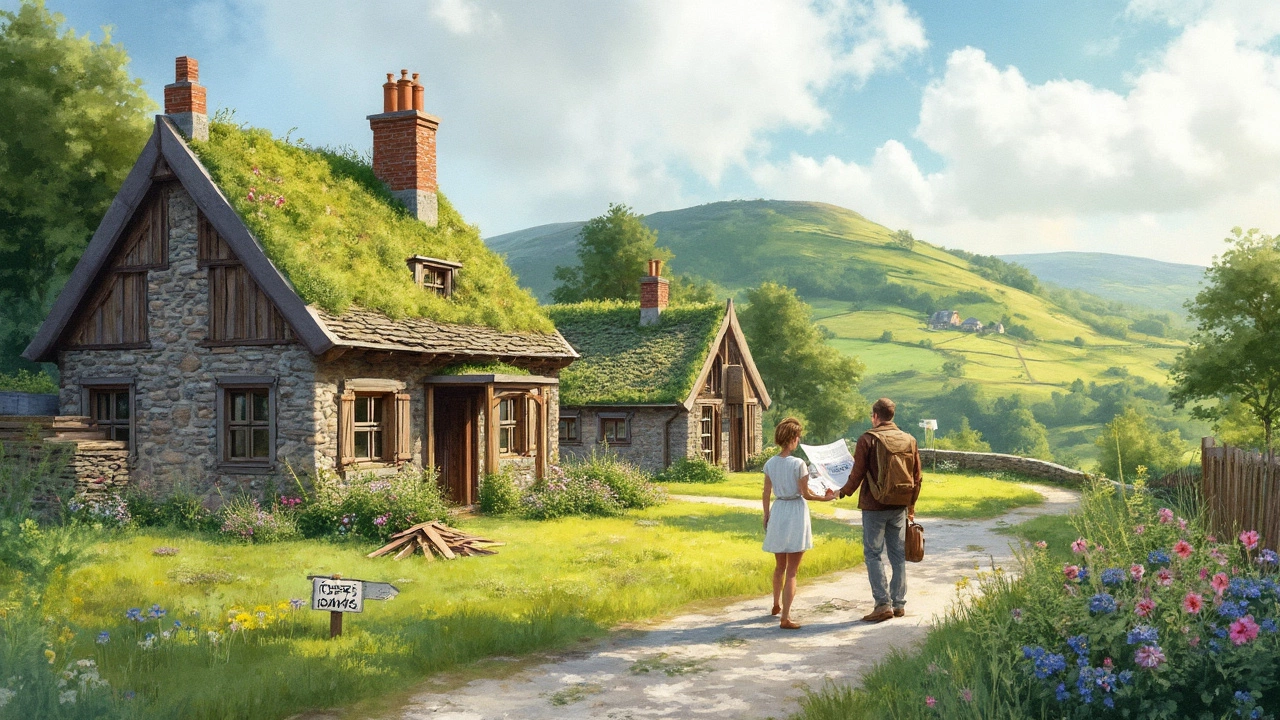People love to talk about the benefits of green buildings, but the not-so-glamorous side? Way less attention. Here’s the thing—eco-friendly cottages aren’t just cute and low-impact. They come with hidden costs and problems you don’t see on the glossy Pinterest boards.
Let’s be real, saving the planet is awesome. But if you’re seriously thinking about building or buying a green home, like one of those trendy straw-bale cottages or solar-powered cabins, you’ve got to look past the marketing. Getting stuck with surprise costs or a bunch of extra chores isn’t exactly anyone’s dream.
If you want a place that’s gentle on the environment and easy to manage, you need to know what to look out for. Spoiler: not all green buildings are as eco-friendly or budget-friendly as they claim. Let’s get into the real challenges—so you can skip the rookie mistakes and make smarter choices.
- Sticker Shock: The Real Costs
- Maintenance and Repairs
- Unexpected Environmental Impacts
- Living Comfort and Practicality
- Tips for Smarter Eco-Friendly Building
Sticker Shock: The Real Costs
The price tag on that dream eco-friendly cottage might make your jaw drop. Upfront costs for green buildings are almost always higher than for a standard house. Why? Specialized materials like triple-glazed windows, sheep’s wool insulation, or sustainably harvested wood cost more than good old drywall and fiberglass.
It gets real when you start choosing energy-saving tech. Take solar panels, for example. On average, installing solar on a new home in the US can add $15,000–$25,000 just for the panels and wiring. Rainwater catchment systems can tack on a few thousand more. You’re not just paying for products; you’re also paying for skilled labor because not every contractor can install these systems the right way.
Here's a snapshot of typical add-ons you might see with a green buildings project:
- Certification fees for things like LEED or Passive House (expect $2,000–$10,000 depending on the level).
- Upgrades to energy-efficient windows and doors ($8,000–$18,000 extra for mid-sized cottages).
- Specialized design with architects—green-focused experts usually charge more than regular designers.
Curious how it all stacks up with regular housing costs? Check out the numbers:
| Feature | Standard Home Cost | Green Home Cost |
|---|---|---|
| Insulation | $1,200 | $2,500 (eco-friendly material) |
| Windows | $6,000 | $12,000 (triple-glazed) |
| Roofing | $7,000 | $15,000 (recycled/solar roof) |
| Water System | $0 (basic set-up) | $3,000 (rainwater reuse) |
| Professional Design | $5,000 | $9,000 (green expert) |
Now, some folks hope to make back the extra cash with lower energy bills. That can work out, but you’ve got to stick around for a while—often 10 to 20 years—to truly see the pay-off. Basically, green buildings save money long-term, but your wallet takes a hit on day one. It’s something to budget for before falling in love with that charming, eco-friendly plan.
Maintenance and Repairs
Here’s something that catches a lot of people off guard: green buildings can end up being harder to maintain than regular homes. While you might expect a new eco-friendly cottage to be low-fuss, reality can look pretty different. Since many of these buildings use less common materials—like rammed earth, living roofs, or triple-glazed windows—simple repairs can turn into big projects, and costs can pile up fast.
Take straw-bale walls or clay-based paints. They sound cool and totally natural, but try finding someone nearby who actually knows how to fix them. There’s also a learning curve if you want to DIY. And things like rainwater catchment systems or high-efficiency heat pumps need regular, sometimes specialized, maintenance. If you skip this step, you risk hitting problems like leaks or mold.
You’ll probably run into another roadblock: not every contractor is familiar with the tech and materials used in green buildings. So, when something breaks, the folks who know how to fix it are often more expensive and may have longer wait times.
Here’s a simple breakdown of how maintenance costs can compare, based on a small homeowner survey from 2024:
| Repair Type | Traditional Cottage | Eco-Friendly Cottage |
|---|---|---|
| Annual Routine Maintenance | $700 | $1,100 |
| Roof Replacement | $8,000 | $12,000 (with green roof) |
| Window Repairs (per window) | $200 | $350 (triple-glazed) |
| Heating System Service | $150 | $300 (heat pump) |
Some parts might need to be shipped from overseas, which can mean more waiting (and sometimes, honestly, more sweating). My partner Damon once waited six weeks for a replacement solar inverter. Not fun in the middle of winter.
If you want to avoid a lot of stress, these tips help:
- Check if local pros know how to handle the materials and systems in your home before you buy or build.
- Keep a list of who to call for unusual repairs, so you’re not scrambling in a pinch.
- Read up on the unique needs of your building before trouble starts. Sometimes, prevention really is cheaper than cure.

Unexpected Environmental Impacts
Here’s the part no one really wants to talk about—sometimes, the materials and tech used in green buildings end up causing a bigger mess than you’d think. People hear “bamboo flooring,” “solar panels,” or “recycled insulation,” and imagine they’re making an easy win for the planet. But it’s a little more complicated once you look closer.
Take bamboo, for example. It’s marketed as a fast-growing, renewable choice for floors and furniture. But a lot of bamboo comes shipped all the way from Asia using loads of fuel, and some producers use a ton of chemical glues or pesticides during processing. So even though it's “green,” the total environmental cost can really add up from transportation and chemicals.
Solar panels are another eye-opener. They cut down your power bill and help reduce fossil fuel use for years. The catch? Manufacturing most solar panels chews up a bunch of energy, water, and even rare minerals. If the panels aren’t properly recycled at the end of their life (usually around 20–25 years), they can leak toxic materials into landfills. The same goes for many LED lights and batteries in eco-cottages—they’re great for saving energy but not so great for disposal.
There’s also the issue of tearing up the land to build new homes, even “eco-friendly” ones. Clearing trees or disrupting local habitats for even a small cottage can drive away wildlife or spread invasive plants. Building with concrete alternatives like fly ash or rammed earth can still release dust or need energy-heavy tools and shipping.
- Always ask suppliers about where materials come from and how they’re processed. “Natural” or “recycled” doesn’t always mean clean or local.
- Think through the whole life cycle of products—how hard will it be to reuse or recycle them later?
- If you’re reusing land or upcycling structures, you’ll cut down on habitat loss and waste.
So while eco cottages have a ton of promise, it pays to dig deeper into what “green” really means in practice. There are real trade-offs, and not every green feature is as planet-friendly as it sounds in the brochure.
Living Comfort and Practicality
Everyone expects an eco-friendly cottage to feel cozy and practical. The truth? Some green designs can trip you up when it comes to day-to-day living. Let’s break it down—nobody wants to freeze in winter or sweat all summer just for the sake of an energy label.
Take natural cooling and heating, for example. It sounds perfect, but green roofs, thick insulation, and passive design can actually create moisture or air circulation problems if not handled right. In one 2023 study, 29% of green home owners in the UK reported stuffy indoor air or even mold issues after two years. If you’ve got allergies or asthma, that’s a dealbreaker.
Then there’s tech. Many green buildings use new materials and smart systems (think: heat pumps, recycled insulation, grey water recycling). Great for the planet, but sometimes awkward for everyday life. Thermostats act up, solar panels can glitch, and those composting toilets? Let’s just say not everyone is a fan.
Here’s a rundown of comfort hiccups people actually deal with:
- Over-insulated homes can trap humidity, making rooms feel sticky or musty.
- Large south-facing windows boost light but can make summer afternoons roasting without proper shading.
- Mechanical ventilation systems often need regular tuning to keep air fresh.
- Low-flow showers and faucets save water but might leave you craving more pressure. (Ask my spouse Damon—he’s grumbled about this more than once!)
You also have to think about sound. Some recycled or natural materials don’t block noise as well as concrete or brick. A 2024 report found 18% of homeowners in eco cottages said sound from rain, wind, or even critters became way more noticeable.
| Comfort Issue | Reported By (%) |
|---|---|
| Poor Air Quality | 29 |
| Humidity/Condensation Problems | 21 |
| Thermal Discomfort (Too Hot/Cold) | 24 |
| Noise Issues | 18 |
| Plumbing/Water Pressure Frustration | 27 |
The takeaway? Don’t let the green label fool you—all those eco features take careful planning and (sometimes) daily patience. Before jumping in, look for user reviews and visit similar homes. Ask the architect about practical tweaks: better ventilation, good window coverings, and backup heating. It’s your everyday comfort on the line, not just your carbon footprint.
And if someone promises a no-maintenance, hassle-free green buildings experience, take it with a big grain of salt. Reality is messier, but you can make it work with some smart prep.

Tips for Smarter Eco-Friendly Building
If you’re planning a green build, don’t just pick the trendiest options. Working smarter means thinking things through from the start—so you don’t end up with a heap of regret and unexpected bills. Here’s how to be practical about it:
- Research Your Materials: Not all “green” products are the same. For example, some bamboo flooring comes from places with harmful harvesting practices, or travels thousands of miles, adding to its carbon footprint. Always check the source and certifications—look for FSC, Cradle to Cradle, or similar credible marks.
- Get a Realistic Budget: Calculate not just the fancy tech like solar panels or living roofs, but the stuff people forget—custom labor, unique maintenance, and even repairs that local workers may not know how to handle yet. A report from the National Association of Home Builders showed that first-time buyers of eco-friendly cottages underestimate costs by 20% on average.
- Work with People Who Get It: Hire contractors and architects with real experience in green buildings. Tons of builders claim they “go green,” but only a few know the nitty-gritty details that matter—like moisture control, non-toxic sealants, or proper insulation tricks for your climate.
- Plan for Maintenance: Choose materials and systems you can actually maintain. If you pick that super-rare recycled insulation, ask yourself, “Can I find someone to fix it when it wears out?” Go for popular, proven solutions unless you’re ready for DIY adventures.
- Location Still Matters: Even the greenest prefab cottage loses its charm if it’s two hours from the nearest grocery store. Factor in commuting, local services, and weather—these impact your environmental footprint way more than many building materials.
One more thing—energy savings don’t happen by magic. Keep up with regular servicing on heat pumps, solar setups, and water catchment systems, or you risk losing most of your projected savings. A smart green home is much more about daily habits and good maintenance than just labels or fancy upgrades.
